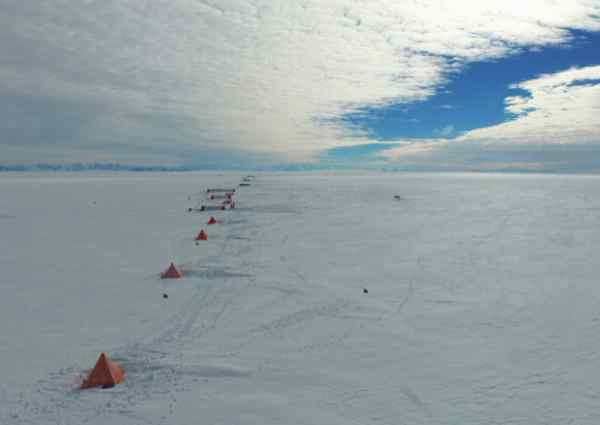Images of climate innovation
Martian X Antarctic Drill
This image shows an Antarctic drilling camp. The British Antarctic Survey's Percussive Rapid Access Isotope Drill (P-RAID) cutting head was adapted from technology originally designed for collecting rock samples on Mars, which is attached once an ice drill has rapidly bored through an ice sheet. These rock samples are used to measure past ice sheet retreat which helps decision makers develop timely and proportionate adaptation actions to climate change effects.

RAID, an innovative electromechanical method of drilling has already been used to help identify a location where million-year-old ice might be found near the Concordia Station in Eastern Antarctica.
The bedrock underneath the ice can also hold information that can help us to adapt to climate change effects. To access that information, we need to sample rock underneath ice sheets. This led to the development of a drill cutting head with hammer action which would allow the RAID to collect rock samples at the bottom of the ice core. The project to develop the rock cutting head was a collaboration between BAS and the University of Glasgow, with funding provided by the Natural Environment Research Council, the UK Space Agency, and the Science and Technology Facilities Council.
Currently, less than 2% of Antarctica is exposed rock, and very little is known about the rock below the ice. When a rock is exposed on the surface, it is hit by cosmic rays, changing the composition of its minerals. Some of these changes produce radioactive isotopes which have a known decay rate. When ice covers the rock, the cosmic rays can no longer cause these changes. Analysis of radioactive isotopes in rock samples collected from below the ice can be used for surface exposure dating and reveal the past ice sheet growth and retreat.
The ice sheets in Antarctica hold over 60% of the earth's freshwater. Sediment cores show that when the ice sheets in the Antarctic significantly retreated in the last interglacial, sea levels rose by up to 6-9m. Obtaining subglacial rock samples will help model how climate change will affect sea levels in the future. A project funded by the European Research Council will use this new drill to obtain rock samples at several locations in Antarctica.
Entrant: Julius Rix , British Antarctic Survey, Ice Dynamics and Palaeoclimate and Antarctic Marine Engineering teams
Copyright: Scott Polfrey
Links
https://www.bas.ac.uk/project/rapid-access-isotope-drill/
https://www.bas.ac.uk/project/p-raid/